Every February 1st since 2009, Canada Post has issued new stamps to commemorate Black History Month in Canada based on two distinguished Black Canadians. This year the honour goes to Kathleen (Kay) Livingston and the former Lieutenant Governor of Ontario, Lincoln M. Alexander.
Toronto-born Lincoln MacCauley Alexander (1922-2012) was a prominent attorney and Politian who had a distinguished career as a public servant. He was the first Black Canadian to be elected to the House of Commons in 1968 and was appointed to the federal Cabinet in 1979. In 1985, Lincoln Alexander was appointed Ontario’s 24th Lieutenant Governor becoming the first member of a visible minority group to serve in that vice-regal office in any province in Canada until 1991. He encouraged countless young people to pursue their dreams – often telling them, "I did it. You can. You will." (From Canada Post) On November 28, 2013, the Legislative Assembly of Ontario declared January 21st of each year Lincoln Alexander Day.
As a presenter of Black History and a hobbyist coin and stamp collector, I have always wanted to write a piece about the Black History Month stamps that Canada Post issues. One burning question I asked Jim Phillips, Director of Stamp Services from Canada Post was “who is the person who decides to feature distinguished Black Canadians on stamps for Black History Month?” The answer is the Canada Post Stamp Advisory Committee (SAC) that was established in 1969 who recommends the themes and designs for Canada’s annual stamp program.
According to Jim; “it’s a group of twelve experts in the fields of design, history, culture and philately who serve three year terms (on occasion, renewable one time) and advise on stamp topics and designs. It’s a balanced group from across the country and we make a conscious effort to represent the whole of the country re race, gender, language, etc.”
From The Blog, in the post How Canada Post Chooses What Goes on a Stamp on May 20, 2013, then Chair of the Canada Post Stamp Advisory Committee, Robert Waite explained the process involved in how someone gets featured on a Canadian stamp. Prior to 2005, with the exception of the ruling Monarch, a person had to be dead to be featured on a Canadian Stamp. However, to commemorate the 80th birthday and of the life and achievements of internationally renowned Canadian jazz composer and musician Oscar Emmanuel Peterson (1925-2007) Canada Post issued a stamp in his honor on August 15, 2005. As a result, Oscar Peterson became the first living Canadian to appear on a Canadian stamp. History was made.
Nevertheless, the honour of the first Black person to be featured on a Canada stamp goes to a former slave, Josiah Henson that was issued on September 16, 1983.
Prior to the formal Black History ongoing series, another distinguished Black individual commemorated on a Canadian stamp was Portia White. Entitled Portia White: Irrepressible Talent was part of The Millennium Collection, Extraordinary Entertainers released on December 17, 1999.
Portia White came from a family of firsts. Her father, William White was the second Black Canadian admitted to Acadia University who graduated in 1903 with a degree in Theology and later became the first Black Canadian to receive a Doctorate of Divinity. Her brothers Bill White was a composer and social activist who became the first Black Canadian to run for federal office for the Co-operative Commonwealth Federation (CCF) in the Toronto constituency of Spadina in 1949. And Jack White was a noted labour union leader and one of the first Black Canadians to run for provincial office in Ontario. (From Portia White)
As part of an aim to bring about more diversity to the stamp program, the Canada Post Stamp Advisory Committee came up with the ongoing series stamps and the correspondent First Day Covers commemorating February’s Black History Month in Canada in 2009.
According to Jim Phillips, once the decision has been made to feature someone on the stamp, two to three design firms are assigned to provide concepts. “The design firms, which have to be professionally accredited firms, are chosen for their experience in both design and miniaturization, and also their location when we’re assigning stamp issues on regional topics. The winning concept is chosen by the Stamp Design Committee.”
To date, since the inception of the ongoing series stamps commemorating February’s Black History Month in Canada since 2009, twleve distinguished Black Canadians, including honorary Canadian Nelson Mandala; two disbanded Canadian communities, Africville in Halifax, Nova Scotia and Hogan’s Alley in Vancouver, British Columba; a military battalion and an explorer and translator, have all graced their presence on Canadian stamps. Ten of the twelve individuals were recipients of some prestigious awards and for many including an Order of Canada designation or a Governor General's Award.
Here is the list of the ongoing series stamps commemorating February’s Black History Month in Canada:
Rosemary Brown (1930-2003) was an activist, politician and feminist who arrived from Jamaica in 1950 to study social work at Montreal’s McGill University. Rosemary Brown “became the first Black woman elected to public office in as a Member of the Legislative Assembly (MLA) in the British Columbia legislature in 1972. She also ran for the leadership of the federal New Democratic Party (NDP), making her the first woman to run for the leadership of a Canadian federal political party.” (From Canada Post)
“Ferguson (Fergie) Arthur Jenkins was born on December 13, 1942, in Chatham, Ontario whose pitching abilities got him signed to the the Philadelphia Phillies 1962. Throughout his career, Fergie Jenkins would pitch for the Philadelphia Phillies (1965-66), the Chicago Cubs (1966-73, 1982-83), the Texas Rangers (1974-75, 1978-81) and the Boston Red Sox (1976-77). He also played basketball with the Harlem Globetrotters in the off season to stay in shape. Fergie Jenkins is the only Canadian honoured in the National Baseball Hall of Fame in Cooperstown, New York (inducted July 21, 1991). (From Canada Post)
With his great stature, abilities and sense of adventure, Ware had all the makings of a folk hero. Skilled with the lariat, he pioneered steer-wrestling and won his first competition at the Calgary Summer Fair of 1893, setting a precedent for what would become a highlight of the Calgary Stampede. Ironically, he died in 1905, when his horse tripped and crushed him. (From Canada Post) An ex-slave slave who became a prominent Albertan cattleman, John Ware’s funeral was the largest in Calgary history.
Viola Irene Desmond (1914-1965) Desmond was arrested in Nova Scotia in 1945, for sitting in the “whites-only” section of New Glasgow’s Roseland theatre. After being dragged from the theatre, sitting up all night in jail still wearing her white gloves, Desmond was tried without counsel and convicted of defrauding the province of the additional one-cent tax for seats in the whites-only section, and fined $20. She paid the fine but went on to fight the charge in higher levels of court. Subsequent trials focused on tax-evasion, not that Ms. Desmond has been a victim of racism. [In 2011], the Lieutenant Governor of Nova Scotia invoked the Royal Prerogative and granted Desmond a posthumous pardon, the first such to be granted in Canada, and the government of Nova Scotia formally apologized.” (From Canada Post) Activist Viola Desmond will be grace the new Canadian $10 bill. (Viola Desmond’s stamps are one of the most requested stamps for reproduction in publications and exhibits.)
"Oliver Theophilus Jones is a Canadian jazz pianist, organist, composer and arranger. Born to Barbadian parents in Montreal, he began his career as a pianist at the age of five. In 1980 Oliver released his first jazz album, The Oliver-Jones Trio. Since then Oliver Jones continues to receive numerous accolades including five Junos, four honorary doctorates, and the Ordre National du Québec and as an Officer of the Order of Canada.” (From Canada Post)
Hogan’s Alley was the unofficial local name of a “four block long alleyway in Vancouver, on Canada’s west coast. It was known as a vibrant destination for food and jazz and was a centre of the city’s black community. It was called Hogan’s Alley, although the origins of the name are obscure. It too was razed in the 1960’s to make way for new development.
This stamp also features actual photos of area residents imposed on a background image of the alley. The two people shown are Fielding Spotts, a cooper by trade and the first Baptist in Western Canada, and Nora (Zenora) Hendrix, grandmother to rock legend Jimi Hendrix and cook at Vie’s Chicken and Steak House.” (From Radio Canada International)
Although the Canada Post Stamp Advisory Committee choses who appears on a Canadian stamp as well as the designer, the Canadian public also is involved in the decision making process. Anyone can participate in nominating an individual and/or topic as many topics come from the public.
Chair
Stamp Advisory Committee
Canada Post
2701 Riverside Drive, N1070
Ottawa, ON
K1A 0B1
(Click this link to be directed to the process involved in how to suggest a subject for a stamp and/or apply to design a stamp.)
One individual I would love see grace a Canadian stamp to commemorate Black History Month in Canada, is my heroine Harriet Tubman. Unbeknownst to most Canadians, Harriet Tubman settled in St. Catharines, Ontario from 1851 to 1858 before returning to the United States to serve as scout, spy and nurse in the Union Army during the American Civil War. Harriet Tubman is still considered the first and only woman to have led American troops in war. But that is a subject for another post.
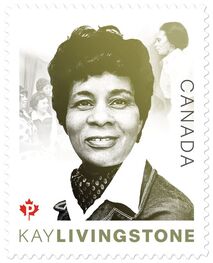
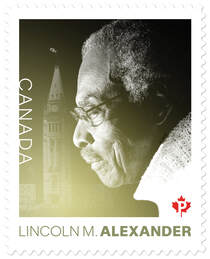



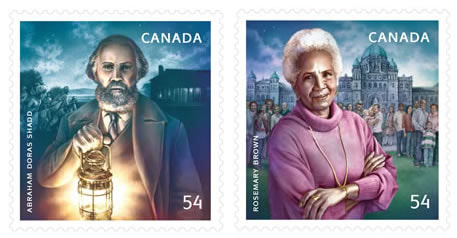

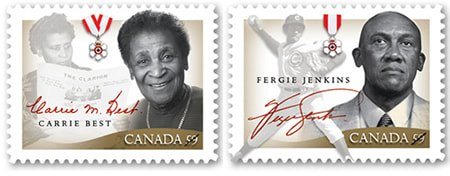

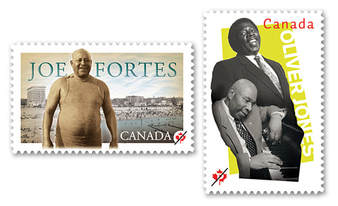



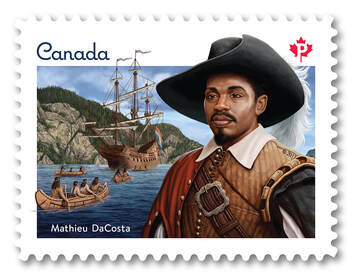
 RSS Feed
RSS Feed
